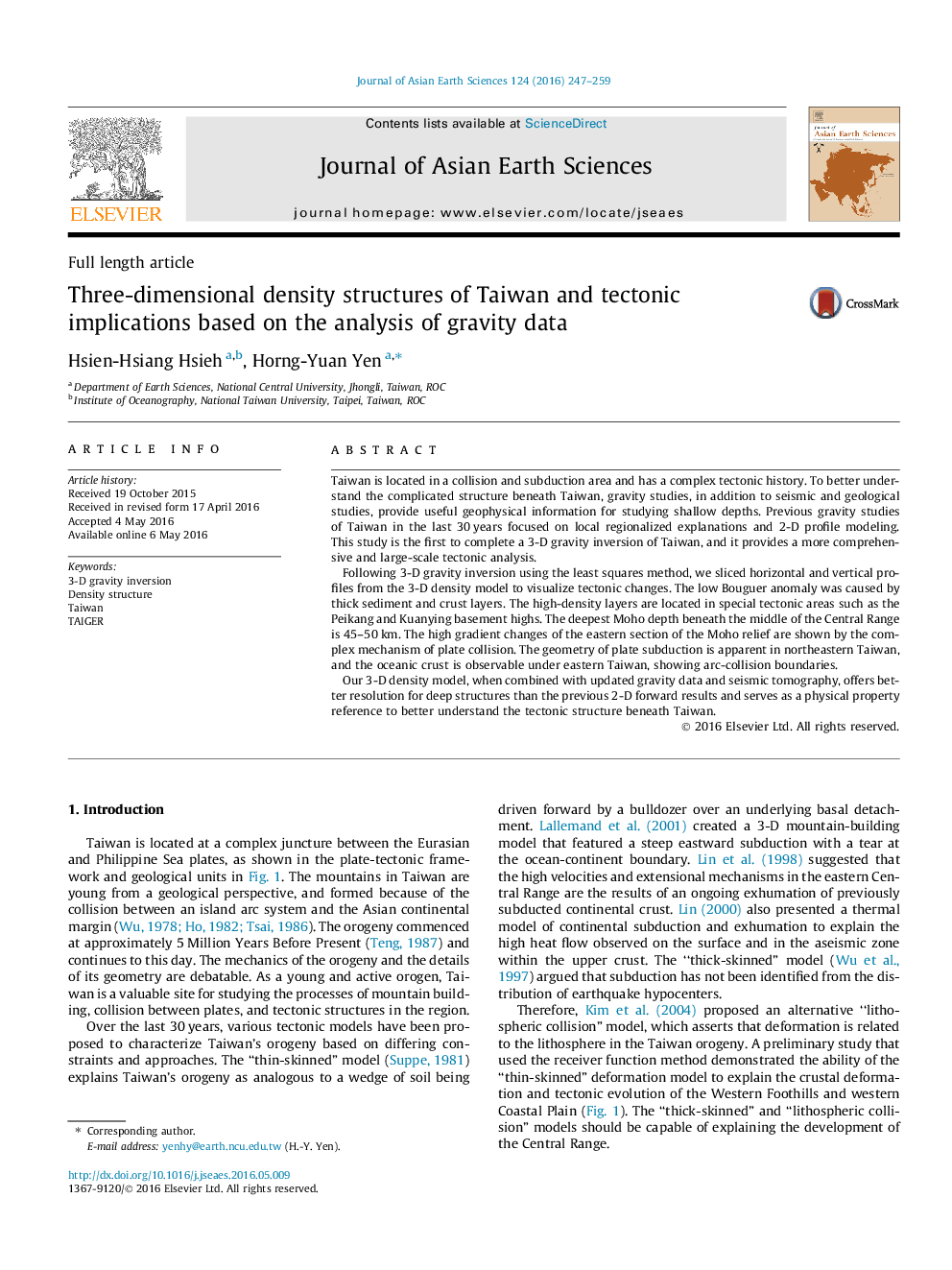| Article ID | Journal | Published Year | Pages | File Type |
|---|---|---|---|---|
| 4729991 | Journal of Asian Earth Sciences | 2016 | 13 Pages |
•The first comprehensive 3-D density model of Taiwan.•The two plates (EP and PSP) subduction geometries are presented.•Shallower Moho depth figures out the non-Isostasy of Taiwan.•The deepest Moho is not over 50 km located beneath the north of central CR.•1-D density profiles are discussed about the density changing with depth at different geological areas.
Taiwan is located in a collision and subduction area and has a complex tectonic history. To better understand the complicated structure beneath Taiwan, gravity studies, in addition to seismic and geological studies, provide useful geophysical information for studying shallow depths. Previous gravity studies of Taiwan in the last 30 years focused on local regionalized explanations and 2-D profile modeling. This study is the first to complete a 3-D gravity inversion of Taiwan, and it provides a more comprehensive and large-scale tectonic analysis.Following 3-D gravity inversion using the least squares method, we sliced horizontal and vertical profiles from the 3-D density model to visualize tectonic changes. The low Bouguer anomaly was caused by thick sediment and crust layers. The high-density layers are located in special tectonic areas such as the Peikang and Kuanying basement highs. The deepest Moho depth beneath the middle of the Central Range is 45–50 km. The high gradient changes of the eastern section of the Moho relief are shown by the complex mechanism of plate collision. The geometry of plate subduction is apparent in northeastern Taiwan, and the oceanic crust is observable under eastern Taiwan, showing arc-collision boundaries.Our 3-D density model, when combined with updated gravity data and seismic tomography, offers better resolution for deep structures than the previous 2-D forward results and serves as a physical property reference to better understand the tectonic structure beneath Taiwan.
